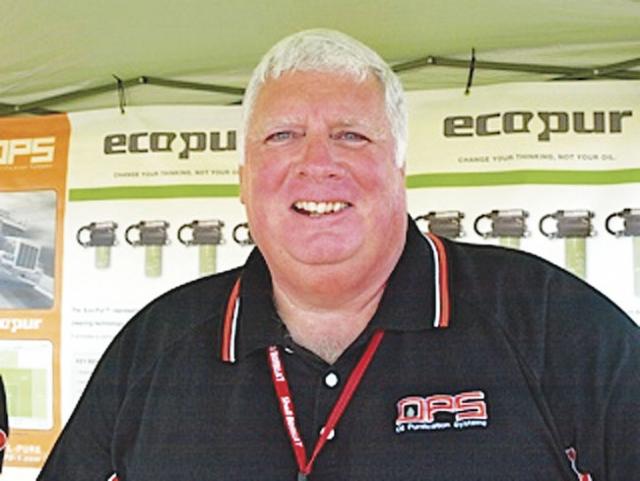Understanding Oil Contaminants

Here are a few questions submitted this month that I thought may be of interest to our readers.
• My oil sample results were showing high fuel dilution that caused my viscosity to drop a grade. I added a viscosity stabilizer to bring the viscosity up to correct grade. Am I putting my engine at risk for failure?
While the viscosity stabilizer will bring the oil back up to the proper grade, you are just masking a fuel dilution issue that eventually will cause serious damage to the engine. Bear in mind that most oil analysis labs will not perform a Gas Chromatography test if the viscosity is within the parameters for your grade of oil. They will report a < 1% level based on the viscosity level without actually testing for fuel dilution. Therefore you would never know you have fuel dilution that is eroding the wear metal additive package in your oil that protects metal to metal wear. Gas Chromatography will report the actual level of fuel dilution in spite of the viscosity levels. I have seen fuel dilution at over 10% with a viscosity of 14.5 on a SAE15W40 oil (12.2-16.2) that would not have detected a serious fuel contamination issue. I find it is always best to fix a problem rather than mask it to avoid engine failures.
•I brought my truck in for an overhead and the technician told me I needed a new camshaft. Why didn’t the oil sample results let me know my cam shaft was bad?
The first question I asked was the camshaft bad due to wear or were there large pieces that had flaked off the camshaft? The second question was there a broken rocker arm or fractured cam follower that caused the damage? The third question was there signs of wear on all cam lobes or just one?
The answer I hear most often is that the camshaft had sections where pieces of metal were missing. This is caused by improper heat treating of camshaft that should harden the cam lobes to reduce wear and over time large pieces flake off. These pieces are large enough that if they end up in the oil pan they would be trapped by the oil pick- up tube screen or the primary filter. The oil would not show signs of contamination therefore would not be reported on an oil sample taken from a sampling valve or midstream flow of oil from drain pan. If a rocker arm or cam follower broke, the damage would have been immediate and most likely the truck would have been brought in for repair due to loss of power or noise. The wear that was created by the metal to metal wear of cam lobe would show up on a sample but the damage would have already occurred. If all the cam lobes had signs of wear, then the oil sample should have had increased levels of Nickel, Iron and possibly lead which are the signs of impending camshaft failure. If one lobe has signs of wear, it is indicative of a manufacturing defect and could have worn at a rate that would not be high enough to forewarn of the failure.
•I have an increase in viscosity and oxidation coupled with a sizeable decrease in total base number (TBN). What could be causing this combination?
The answer is HEAT, the oil is overheating increasing the chemical reaction that adds oxides and acid formation, to oil and causes the base additives calcium, magnesium, phosphorous to lose potency. The added heat will cook the oil causing it to thicken and the viscosity will increase. The cause of the excess heat can be as simple as running with low oil levels, a defective oil cooler, or restricted flow in oil galleys or turbo charger. The low level of oil does not allow the oil to cool in oil pan before starting a new oil cycle through engine. A blocked oil cooler will not allow the oil to dissipate heat and restrictive flow keeps oil in engine longer increasing heat levels.
•My oil sample has high potassium but very little sodium that would indicate an antifreeze contamination of my oil. Where could it be coming from?
Potassium is a major ingredient in preservative compounds that are used to protect engine parts from corroding while on the shelf. Usually when I see this I ask if any parts that come in contact with the oil have been replaced recently i.e. oil coolers, turbo chargers, oil pans, charge air coolers (potassium with aluminum) etc. If no parts have been replaced, then the contamination could be environmental or from an additive that was added to oil.
Stop by OPS-Oil Purification Booth 1012 at The Great American Truck Show August 22-24 in Dallas.
If you have any questions on oil sampling results or oil in general please send them to me at: [email protected] and I will provide answers in this column.
